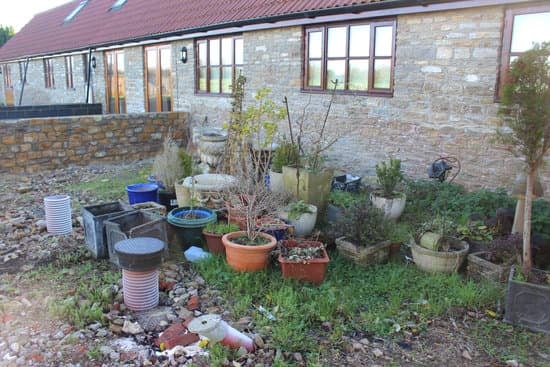Home improvement encompasses a wide range of projects aimed at enhancing the functionality, aesthetics, and value of one’s living space. This can include everything from minor repairs and cosmetic upgrades to major renovations and structural changes. When considering what is included in home improvement, it is important to understand the breadth of possibilities that fall under this category.
Setting clear goals is essential in any home improvement project. Whether you are looking to increase your home’s resale value, improve energy efficiency, or simply create a more comfortable living environment, defining your objectives will guide your decision-making process. From small-scale updates like painting walls or replacing fixtures to larger undertakings such as kitchen remodels or room additions, there are endless ways to transform your home.
Budgeting plays a key role in determining the feasibility and scope of your home improvement endeavors. By establishing a realistic budget upfront and exploring financing options if necessary, you can better plan for materials, labor costs, permits, and unforeseen expenses that may arise during the course of the project. Understanding your financial limitations will help you prioritize where to allocate resources and make informed choices throughout the renovation process.
Setting Your Home Improvement Goals
When embarking on a home improvement project, it is crucial to clearly define your goals and objectives. By setting specific and realistic goals, you can effectively plan and execute your renovation or remodeling tasks. Here are some key steps to help you define your home improvement goals:
- Assess Your Needs: Take a close look at your home and identify areas that require improvement. Whether it’s updating outdated fixtures, increasing space, or enhancing curb appeal, understanding your needs will guide your renovation plans.
- Prioritize Projects: Make a list of all the potential projects you wish to undertake in your home. Prioritize them based on urgency, budget constraints, and personal preferences. This will help you focus on the most important tasks first.
- Set Realistic Timelines: Determine how quickly you want to complete each project and establish realistic timelines. Consider factors such as availability of materials, labor resources, and any upcoming events that may impact your renovation schedule.
By taking the time to set clear and achievable home improvement goals, you can ensure a successful outcome for your projects. Whether you are planning a minor upgrade or a major renovation, having a well-defined plan will help you stay focused and on track throughout the process.
Remember that effective goal-setting is not just about the end results but also about the journey towards achieving them. Be flexible in adjusting your goals as needed and enjoy the satisfaction of seeing your vision come to life through your home improvement endeavors.
Essential Tools and Equipment for Home Improvement
When embarking on home improvement projects, having the right tools and equipment is crucial to ensure successful completion. Whether you are a seasoned DIY enthusiast or just starting out with simple repairs and updates, having a well-equipped toolbox can make all the difference. Some of the basic tools that are essential for most home improvement projects include a hammer, screwdrivers (both flathead and Phillips), pliers, tape measure, level, utility knife, and a power drill.
Apart from hand tools, certain power tools can significantly expedite tasks and provide more precise results. Power saws such as circular saws and reciprocating saws are handy for cutting materials like wood or metal. A cordless drill is versatile for drilling holes and driving screws efficiently. Additionally, sanders like orbital sanders or belt sanders can smoothen surfaces before painting or staining. For specialized tasks like plumbing or electrical work, having the appropriate wrenches or wire cutters is essential.
In addition to tools, safety equipment should also be considered indispensable when engaging in home improvement projects. This includes but is not limited to safety goggles, ear protection, work gloves, dust masks for respiratory protection when working with hazardous materials such as insulation or chemicals. Ensuring that you have the proper tools and safety gear not only enhances your efficiency but also prioritizes your well-being during any home improvement endeavor.
| Basic Hand Tools | Power Tools |
|---|---|
| Hammer | Circular Saw |
| Screwdrivers | Cordless Drill |
| Pliers | Orbital Sander |
DIY vs Hiring Professionals for Home Improvement
When it comes to home improvement projects, one of the key decisions you’ll need to make is whether to tackle the task yourself or hire professionals. Both options have their own set of advantages and considerations that should be taken into account before making a decision.
DIY Home Improvement
Taking on a do-it-yourself (DIY) home improvement project can be a rewarding experience. It allows you to take full control of the project, giving you the opportunity to learn new skills and test your creativity. DIY projects also tend to be more cost-effective since you won’t have to pay for labor costs.
However, it’s important to realistically assess your skills and abilities before diving into a DIY project. Some tasks may require specialized knowledge or tools that you may not possess. Additionally, if done incorrectly, DIY projects can end up costing more in the long run to fix any mistakes.
Hiring Professionals for Home Improvement
On the other hand, hiring professionals for your home improvement projects can save you time and ensure high-quality results. Professionals have the expertise and experience needed to complete tasks efficiently and effectively. They also have access to specialized tools and materials that may not be readily available to homeowners.
Before hiring professionals, make sure to research and obtain multiple quotes from different contractors or companies. This will help you compare costs and services offered, ensuring that you get the best value for your money. When hiring professionals, be clear about your goals and expectations for the project to avoid any misunderstandings down the line.
Popular Home Improvement Projects to Consider
When it comes to home improvement projects, there are endless possibilities to enhance the aesthetics, functionality, and value of your home. Whether you are looking to tackle a small project or completely renovate a room, it’s essential to consider what goals you have for your space. Some popular home improvement projects that homeowners often consider include:
Kitchen Renovation
One of the most commonly sought-after home improvement projects is a kitchen renovation. This can range from updating cabinets and countertops to completely gutting the space and starting from scratch. A modern and functional kitchen can significantly increase the overall value of your home while also providing you with a more enjoyable cooking and dining experience.
Bathroom Remodel
Another popular project is a bathroom remodel. Upgrading fixtures, tiles, and layout can transform a dull bathroom into a luxurious spa-like retreat. Whether it’s adding a new bathtub, installing a rainfall showerhead, or simply updating the vanity, there are countless ways to improve this important space in your home.
Outdoor Living Space
Many homeowners are also focusing on creating inviting outdoor living spaces. This could include building a deck or patio area for entertaining guests, adding landscaping elements like flower beds or trees, or even installing an outdoor kitchen for al fresco dining. Enhancing your outdoor space not only adds value to your property but also provides an additional area for relaxation and enjoyment.
These popular home improvement projects can range in complexity and cost depending on your goals and budget. Before starting any project, it is crucial to plan carefully, set realistic expectations, and consider whether you will be tackling the project yourself or hiring professionals for assistance. By carefully considering what improvements are most important to you and your lifestyle, you can create a more comfortable and appealing living environment that suits your needs.
Incorporating Sustainable and Eco-Friendly Practices in Home Improvement
When considering home improvement projects, it is important to think about incorporating sustainable and eco-friendly practices. This not only benefits the environment but can also lead to cost savings in the long run. One way to make your home improvement more sustainable is by using materials that have been sourced responsibly and have a minimal impact on the environment. For example, using reclaimed wood or bamboo flooring can reduce the need for new materials that contribute to deforestation.
Another way to practice sustainability in home improvement is by improving energy efficiency within your home. This can include upgrading to energy-efficient appliances, installing solar panels, or improving insulation and sealing gaps to reduce energy consumption. These improvements not only help the environment by reducing carbon emissions but also result in lower utility bills for homeowners.
In addition to using sustainable materials and improving energy efficiency, incorporating water-saving fixtures and systems can also contribute to eco-friendliness in home improvement projects. Installing low-flow toilets, faucets, and showerheads can help conserve water resources while still maintaining functionality in your home. Overall, making sustainable choices in home improvement not only adds value to your property but also contributes positively to the environment.
| Incorporating Sustainable Practices | Benefits |
|---|---|
| Using reclaimed wood or bamboo flooring | Reduces need for new materials; minimal impact on environment |
| Improving energy efficiency (e.g. solar panels) | Reduces carbon emissions; lowers utility bills |
| Installing water-saving fixtures | Conserves water resources; adds value to property |
Safety Measures to Consider During Home Improvement Projects
When undertaking home improvement projects, ensuring the safety of yourself and others is paramount. Whether you are tackling minor repairs or major renovations, it is essential to implement precautionary measures to prevent accidents and injuries. One of the first steps in promoting safety during home improvement projects is to conduct a thorough assessment of the work area. This includes identifying potential hazards such as electrical wires, sharp objects, or unstable structures that could pose risks during construction.
It is also important to wear appropriate personal protective equipment (PPE) when engaging in home improvement tasks. This may include safety goggles, work gloves, hard hats, and sturdy footwear. Additionally, following manufacturer guidelines for the use of power tools and equipment can help minimize the risk of accidents. It is crucial to familiarize yourself with the proper handling and operation of each tool before using them to avoid accidents or damage.
Furthermore, having a first aid kit readily available on site is crucial in case of emergencies. Accidents can happen unexpectedly during home improvement projects, so being prepared with basic medical supplies can make a significant difference in providing immediate treatment if needed.
Moreover, communicating with all individuals involved in the project about safety protocols and emergency procedures is essential for everyone’s well-being. Taking these precautions will not only protect you and your loved ones but also ensure smooth progress in your home improvement endeavors.
How to Maintain and Update Your Home Improvement Projects
In conclusion, home improvement encompasses a wide range of projects and activities aimed at enhancing the functionality, aesthetics, and value of a home. From minor repairs and cosmetic upgrades to major renovations and additions, there are numerous ways to improve your living space.
It is essential to have a clear understanding of the scope of home improvement before embarking on any projects. This includes identifying areas that need improvement, setting realistic goals, creating a budget, and determining whether to tackle the tasks yourself or hire professionals.
When it comes to maintaining and updating your home improvement projects, consistency is key. Regular maintenance can help prolong the life of your upgrades and prevent costly repairs down the line. Updating your projects periodically can also keep your home looking fresh and modern.
Consider incorporating sustainable and eco-friendly practices into your home improvements to reduce your environmental impact and save on utility costs. Additionally, always prioritize safety when working on home improvement projects by using the proper tools and equipment, following safety guidelines, and knowing when to call in a professional for assistance.
Whether you are considering a small weekend DIY project or a full-scale renovation, remember that home improvement is an ongoing process that requires commitment, planning, and attention to detail. By taking the time to set goals, create a budget, invest in quality tools, prioritize safety measures, and incorporate sustainable practices, you can ensure that your home improvement projects not only enhance your living space but also add value to your property in the long run.
Trusting professionals when needed and staying proactive in maintaining and updating your projects will help you create a comfortable and beautiful living environment for years to come.
Frequently Asked Questions
What Is Classified as Home Improvement?
Home improvement refers to any project or renovation done to enhance or upgrade a residential property. This can include both interior and exterior changes such as remodeling, repairs, additions, landscaping, or even energy efficiency upgrades.
What Does the IRS Consider Home Improvements?
The IRS considers home improvements as investments that add value to your home or prolong its useful life. These improvements are typically considered capital expenses and can potentially be used to increase the basis of your home for tax purposes when you sell it.
What Does Home Improvement Entail?
Home improvement entails a wide range of tasks and projects aimed at enhancing the appearance, functionality, and value of a residential property. This could involve anything from minor cosmetic changes like painting walls or replacing fixtures to major overhauls like renovating kitchens, bathrooms, or adding additional living space through extensions.
The goal is to make the living environment more comfortable, efficient, and appealing for homeowners.

I’m thrilled to have you here as a part of the Remodeling Top community. This is where my journey as an architect and remodeling enthusiast intersects with your passion for transforming houses into dream homes.





